The Dreaded Hornworm!
Tobacco Hornworm
Manduca sexta (Linnaeus) (Insecta: Lepidoptera: Sphingidae)
You can tell the difference between the tobacco and the tomato hornworms by the markings on the side, V shaped are for the tomato hornworm that likes to eat tomato vines and the straight lines are for the tobacco hornworm. Also the horn on the hind-end of the tobacco hornworm is red, which is the color of mine. I am letting my grandkids save these caterpillars for pets and see if we can watch them turn into pupas and hatch into moths next spring.
I was checking out my tomatoes and saw these little balls of bug poop. For a bug the poo-balls were huge, at least 1/4 inch in width. I didn't see a butt-hole on this caterpillar, so I wonder which end they poop from? With all that munching and eating some of the food is not used and needs to come back out. That part is called frass, or as you may like to call it, poop.
Unlike the dreaded Cabbage moth that lays lots of eggs, the hornworm moth called, believe it or not, the spectacular Sphinx Moth, which has a 4-6 inch wingspan. This beautiful moth only lays a few eggs here and there. But one hornworm unchecked can eat a whole tomato plant so fast it'll make your head spin. That's why I go and check every other day. I usually pull the caterpillars off my garden plants and feed them to my chickens. Even though the hornworm emits through it's hind-end a green liquid that taste awful as a deterrent. The chickens gobble them up like candy.
I knew immediately before I saw my tomato vines de-leafed I had a hornworm infestation. For as big and spectacular as these caterpillars get, some reach 3 inches in length, the moth is bigger and beautiful. I have a link at the bottom of my article that is used for references and some of the pictures I used in this article. The larger photos are taken with my iPad camera.
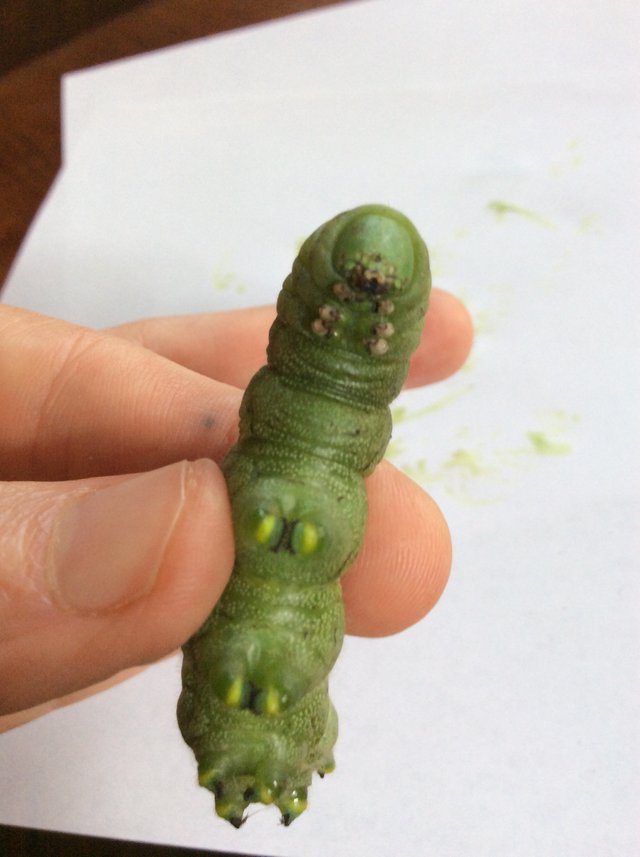

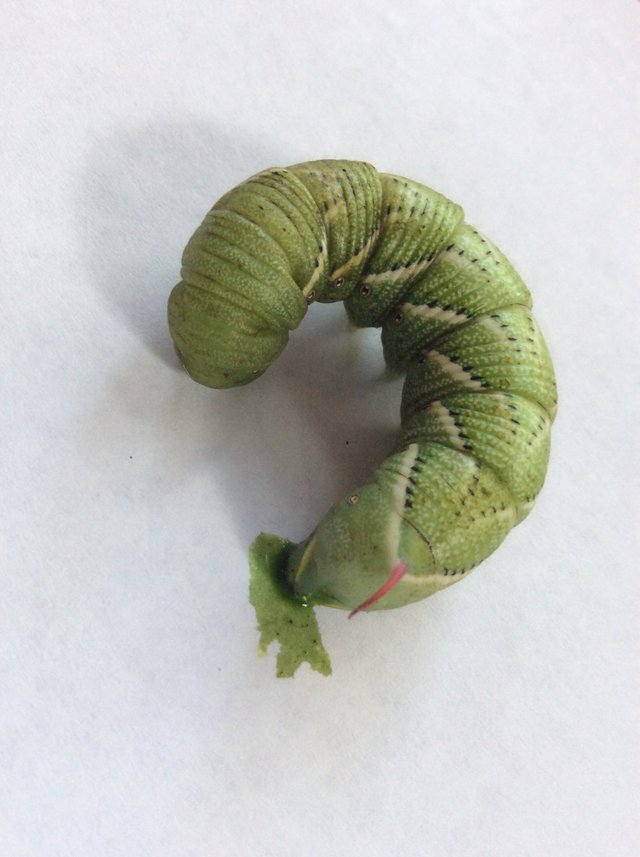

Tobacco and tomato hornworms are common, large caterpillars that defoliate tomato plants. Their large size allows them to strip a plant of foliage in a short period of time, so they frequently catch gardeners by surprise. They are quite similar in appearance and biology.

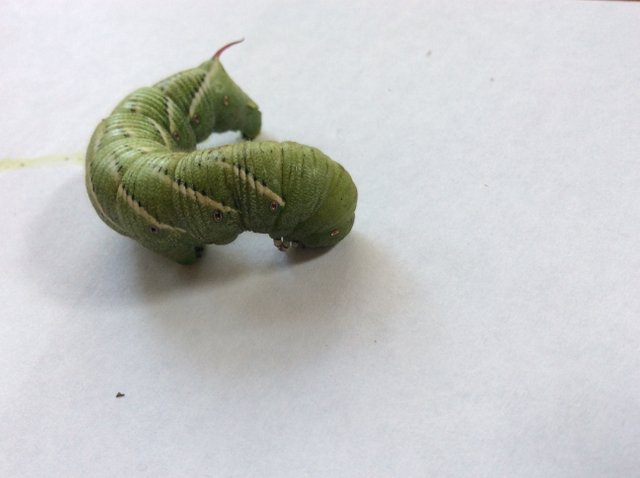

The larva is cylindrical in form and bears five pairs of prolegs in addition to three pairs of thoracic legs. The most striking feature of the larva is a thick pointed structure or "horn" located dorsally on the terminal abdominal segment. The tobacco hornworm develops seven straight oblique whitish lines laterally. The white lines are edged with black on the upper borders, and the "horn" is usually red in color. The tomato hornworm is superficially similar, but instead of the seven oblique lateral bands it bears eight whitish or yellowish "V"-shaped marks laterally, and pointing anteriorly. The "V"-shaped marks are not edged in black. Also, in tomato hornworm the "horn" tends to be black in color. There normally are five instars, but occasionally six are observed. Corresponding mean larval body lengths are 6.7, 11.2, 23.4, 49.0, and 81.3 mm, respectively. Larval development time averages about 20 days.

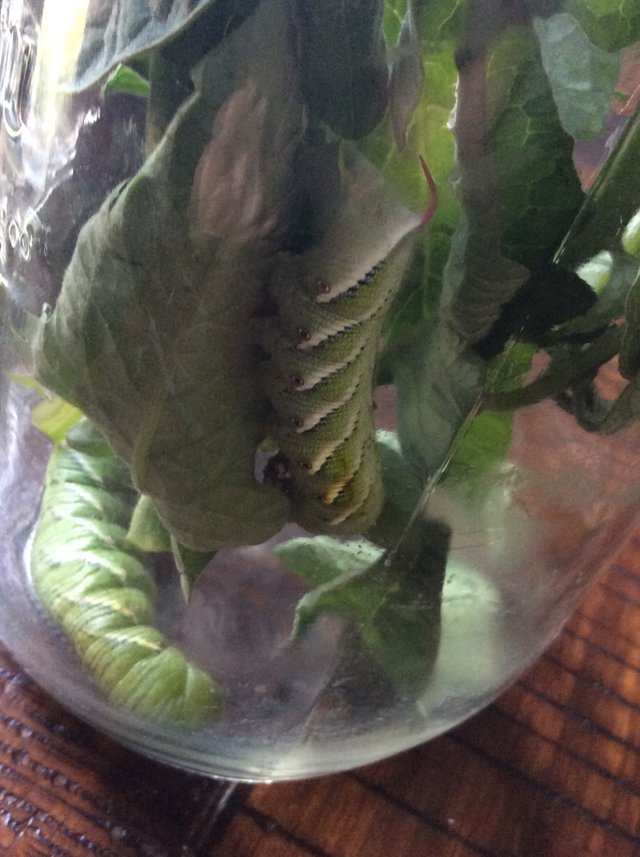

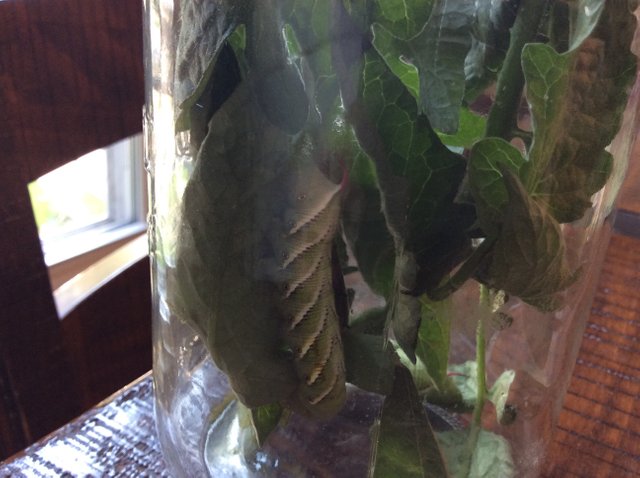







 A link to My Blog
A link to My Blog
The process teaches that if we want to grow and become better and achieve the goals of life, everyone is sure and must be willing to change. In addition, everyone has to go through the process of life in sequence or gradually well, to be able to achieve maximum results.. 👍
We are constantly changing @fataelrumy, that is the law of nature, all things are made from other things and phenomena, which we are made of is in flux. In buddhism this is called anicca, there is no self in this change, anatta, and grasping at this change trying to stop it or run from it or call it self is called dukkha, which translates into tension, stress, suffering. Investigating and understanding this flux allows me to let go and enjoy the ride!
to be good change will be good thing for hereafter..
Caterpillars are very scary. But butterflies are not so beautiful they turn out to justify such ugliness :)
Caterpillars are scary! This particular caterpillar turns into a nighttime dwelling butterfly called the Sphinx Moth.
Those things look pretty cool in a picture, and even sound cool changing their forms at night, but I am sure they'd freak me out xD
wonderful example of natures creativity at work. What a great transformation from a beautiful textured worm to a flying Sphinx-moth. fractal nature is god, how is it possible that we can´t see it? It is in front of our eyes everywhere, and still people believe in anything but nature. That´s a bit sad because in the long run nature rules not banksters.
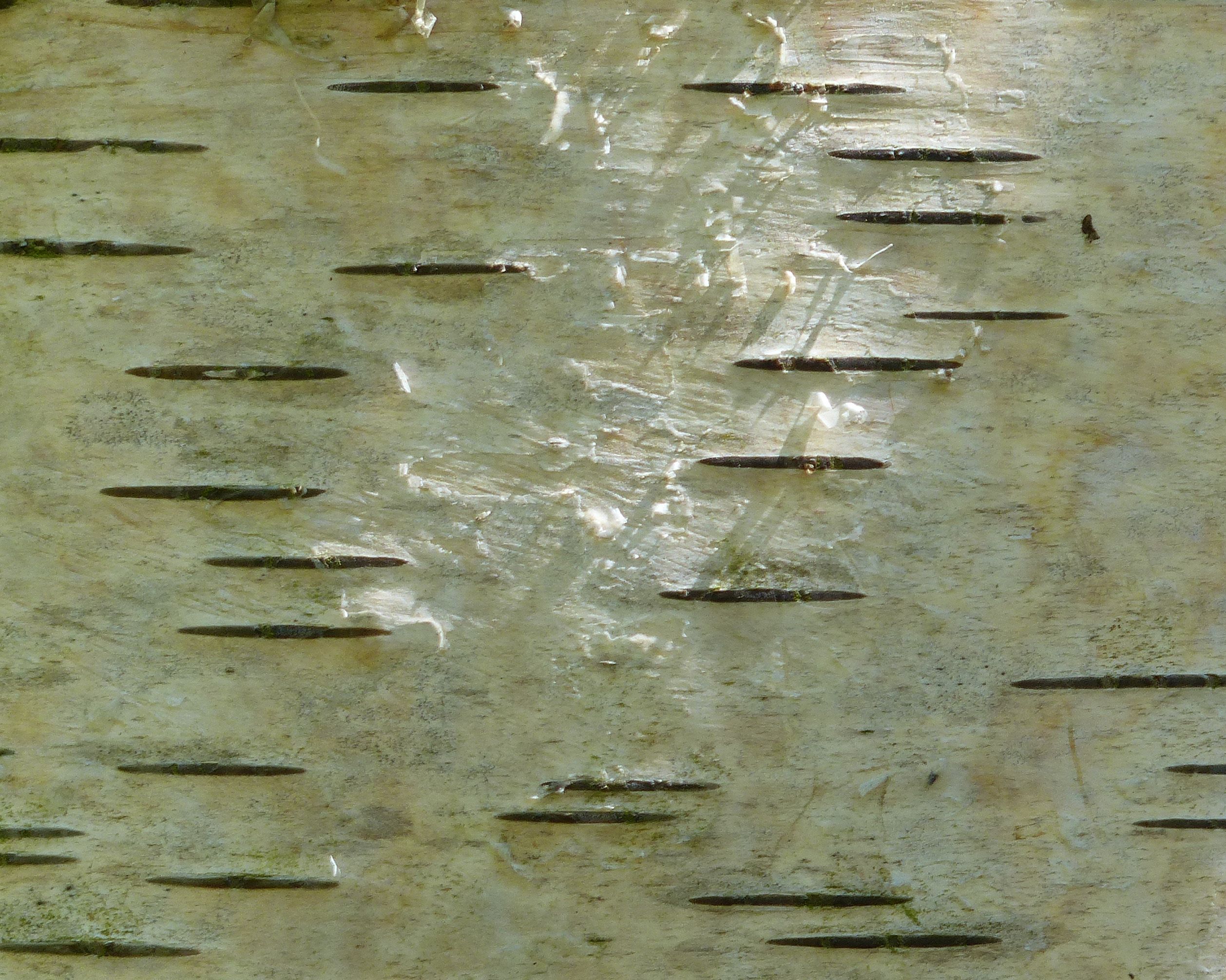
The bankers are only here for a short time and because of their disruptive nature that goes unchecked they will eventually eat themselves. Unlike nature which has checks and balances ;-) Our world is so fractalishes!
I really like this animals because they can improve theirself and get new characteristics.
As a kid I was fascinated by the transformation from one form to another. I collected tadpoles and raised them in a fish tank as well. I would stare for hours at the tank watching tadpoles change into frogs @dim753.
Very good story red, when i was a child i spent time looking how pigeons made their nest and some days later you could see some little pigeons oh nature! my english here very strange hahaha but i can't think in other words to express what i wanted to say
@dim753, I understand your intent and your english is much better than my spanish ;-) hahahah <3
Hehehehehe. Thanks red
I know these things but I never knew what they were called. Lost many tomato plants to these buggers. I have tried spraying the plants with diatomaceous earth and I'm still monitoring the results but so far I haven't seen any catepillars.
I use diatomaceous earth as well, but the way I water my Oklahoma garden I would wash away the dust every day. My Oregon gardens were huge compared to my little suburban garden so it is much easier just to pick the bugs off and feed them to my backyard chickens.
Just learned about using diatomaceous earth. Are you suppose to wash of the diatomaceous dust everyday? I've also been thinking of getting some chickens (for the eggs) but since I am surrounded by neighbors I don't know if the noise will make them angry. Also I have just started trying to get information on city codes that might restrict me from keeping chickens.
No you are not supposed to wash the dust every day, I had drip irrigation in Oregon and here in Oklahoma I use a sprinkler. There are sprays you can make at home with garlic, cyan, and a tiny bit of dish soap with water...most bugs hate it..
http://homeguides.sfgate.com/onion-garlic-bug-spray-73217.html
Thanks. That makes sense. I just found this blog that someone used chili oil in their spray. Thanks for the link.
You are welcome my friend!
It was new for me. I did not know all these things. But the caterpillars look very unpleasant. Resteem your post.
This particular caterpillar isn't as scary looking as some, but it is really fat and ugly...but when I look closure, I can see beauty in the details of form and function.
The complete life cycle of a butterfly is a great example of turning ugly to beauty. Nature is at its best while transforming it.
Nothing is a closed system in nature, we are all connected in this way and energy never stops, it just transforms. I agree!
Yes, I totally agree the total energy of the universe is just constant, it just keeps on changing the forms sometimes it is static sometimes kinetic.
Those critters always amaze me with how they look while they slither around. Looking at your pictures tells me they are also HUGE... I have never seen such huge caterpillars to be honest. We do have some here, small green ones mostly and even they look scary to me!
@poeticsnake if you investigate nature you will find even more amazing creatures that share our world. I will update when they caterpillars start turning into pupas, the large one I am holding is close to turning.
I look forward to seeing the pictures of that moment!
Nature is a big inspiration for my art work!
I might scream seeing a critter or three but the next thing I do is work with it! :D
@reddust,
Actually I never heard about them before! But personally I hate those insects or worms! Thank you very much for sharing such useful article with us! Really appreciate your effort!
Cheers~
I love all bugs @theguruasia, but my kind of love only goes so far, if you start munching on my plants I'm going to feed you to my chickens! hahahaha
@reddust,
Lol :D That's a great way of love :D
It's a code i live by ;-) hahaha
why this looks horrifying to me
What you should be scared of is corporate and government power using you as a tool for their agenda :p